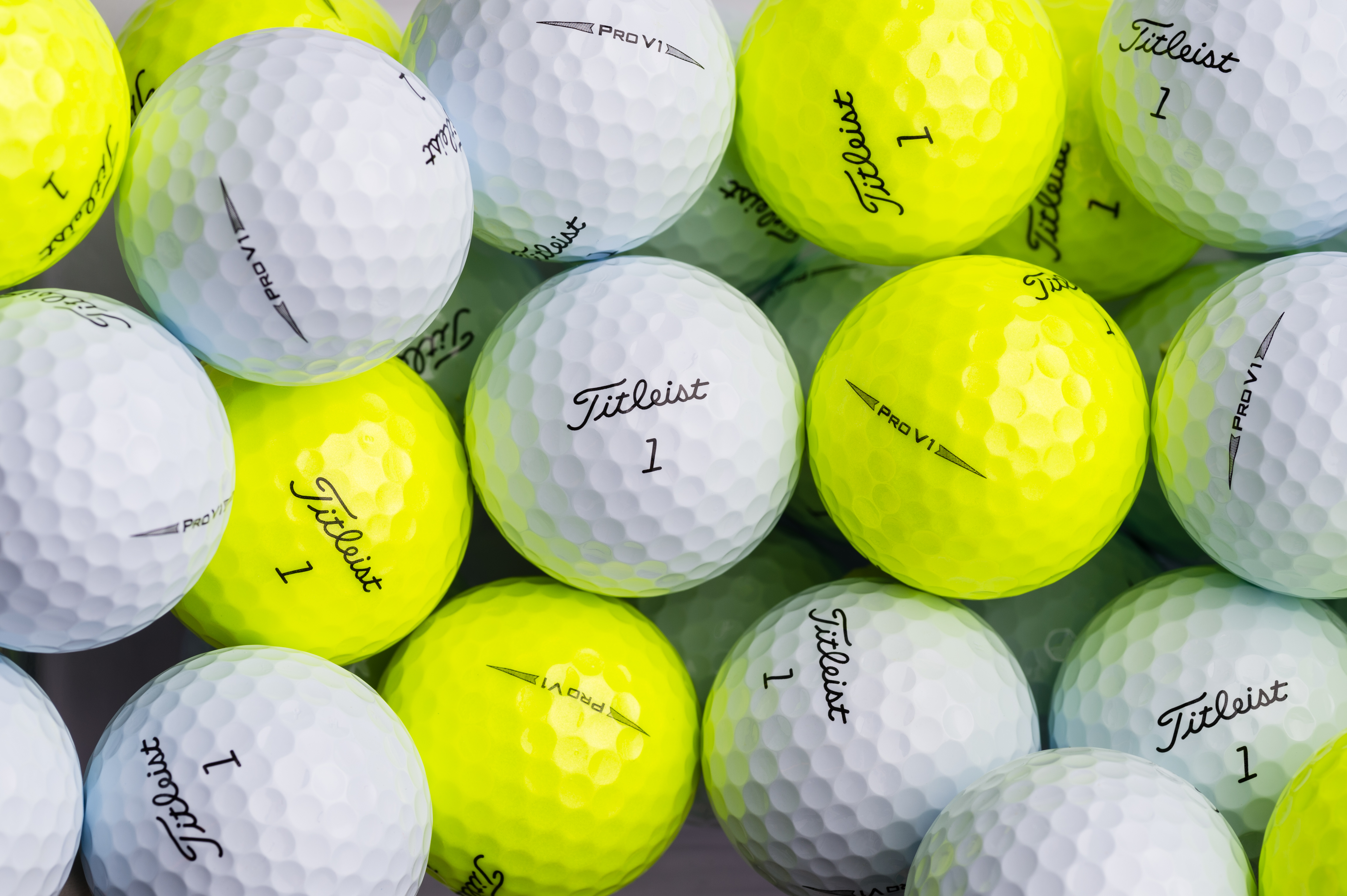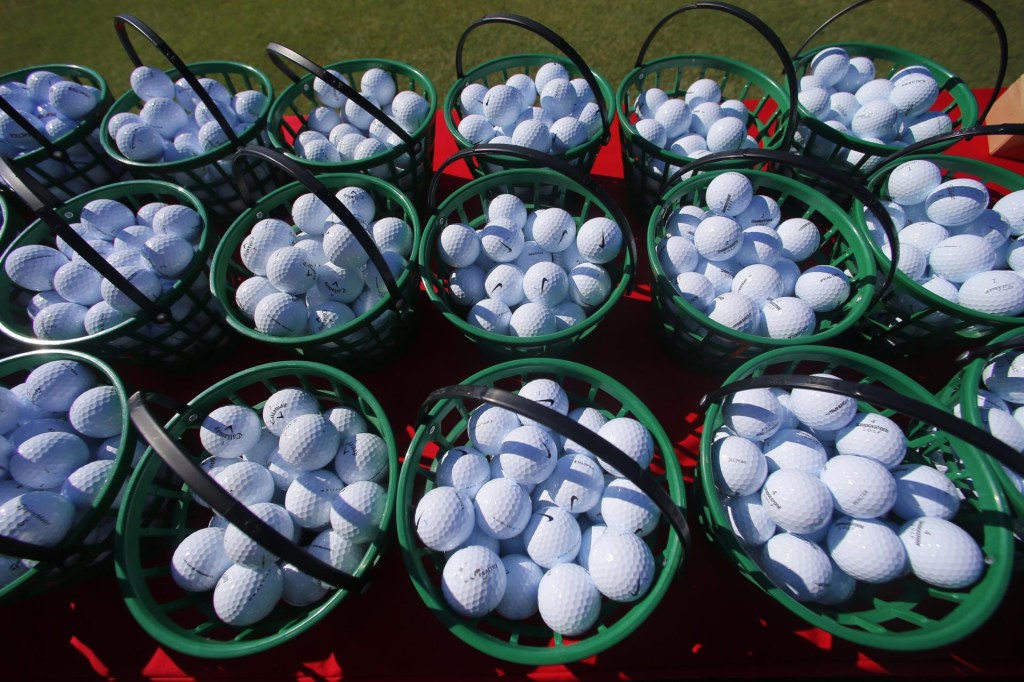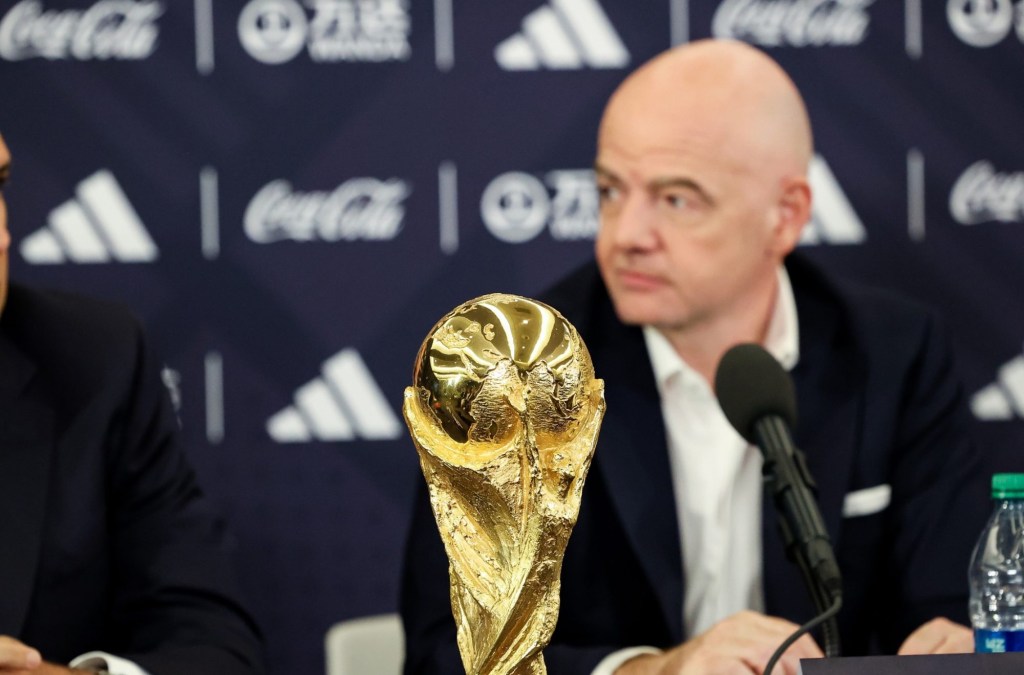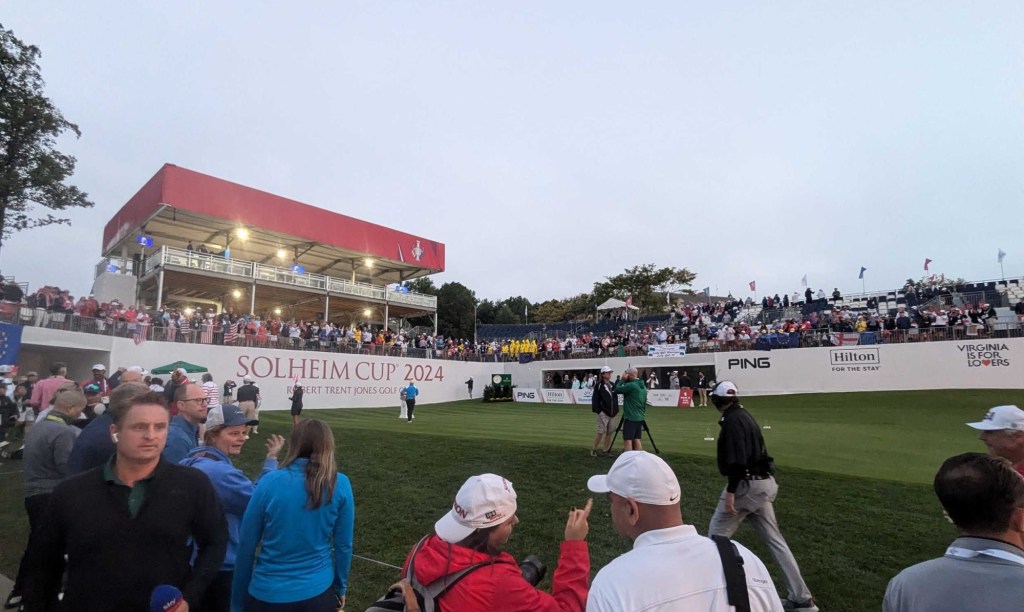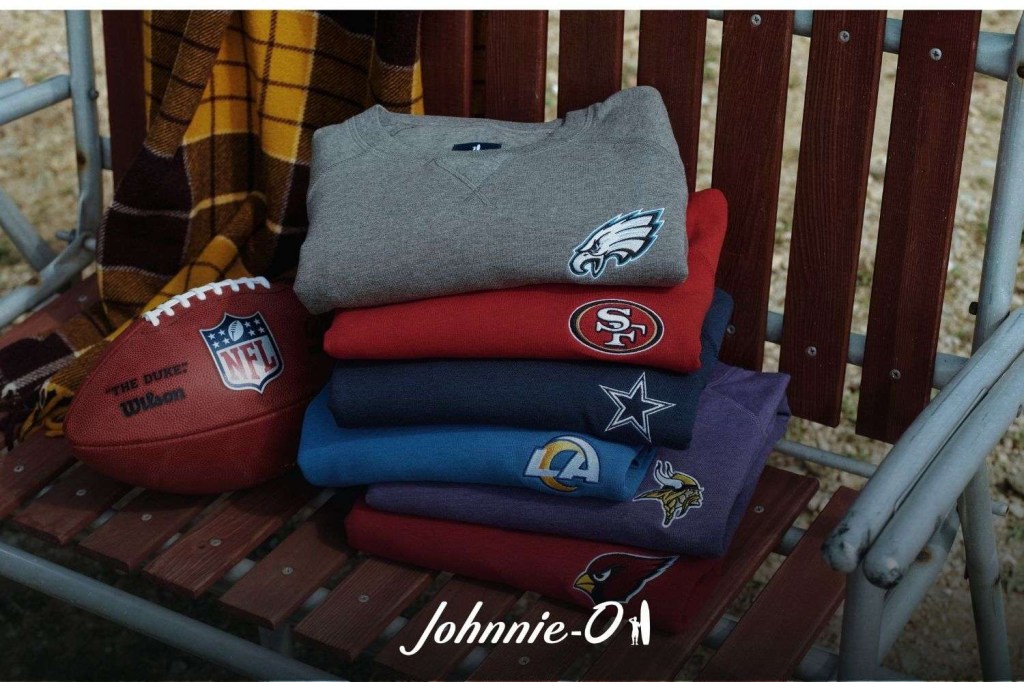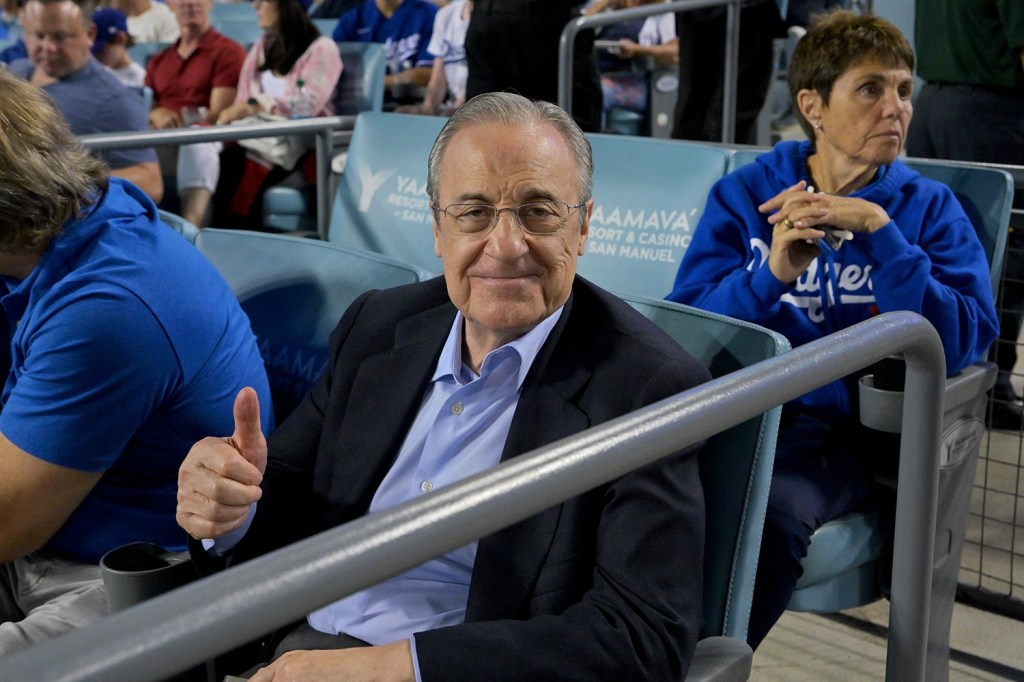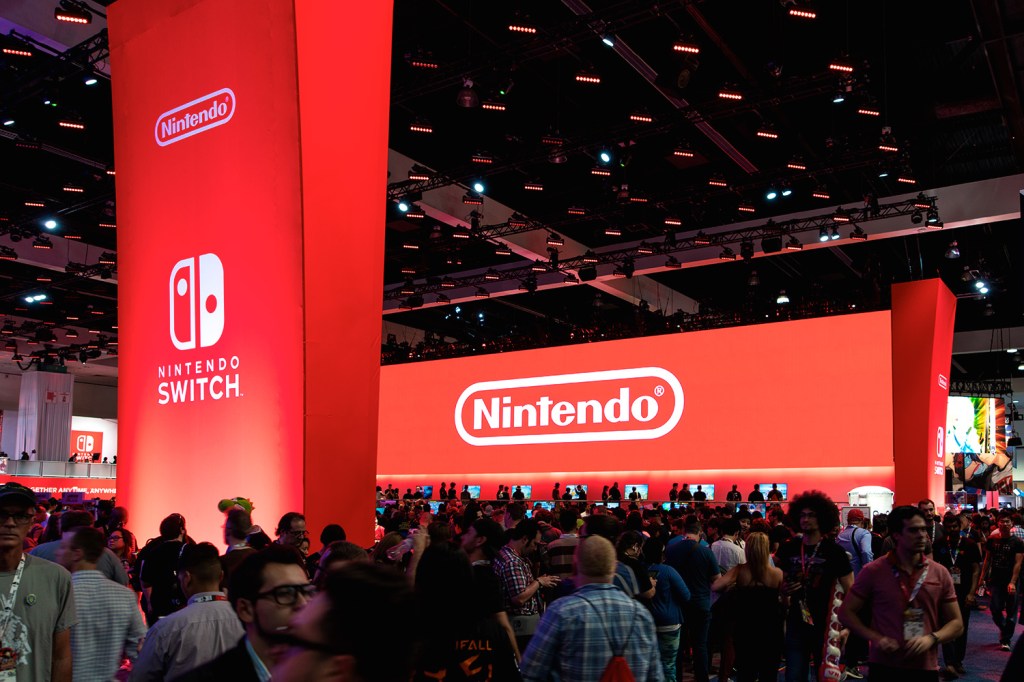
The most dominant player at the 2019 British Open will be 1.68 inches in diameter and weigh 1.62 ounces. Say hello to the undefeated heavyweight champ of the golf world: the Titleist Pro V1 golf ball.
Since launching nearly 20 years ago, the Pro V1 and its sibling Pro V1x have become the No. 1 choice for PGA and LPGA Tour stars.
As the world’s top players clash at the 148th British Open in Northern Ireland Thursday, most will be teeing up the Pro V1 or Pro V1x.
World No. 1 Brooks Koepka is expected to play a Pro V1x, although he doesn’t have an official deal and the company’s not allowed to use his name or likeness. Ditto for U.S. Open Champion Gary Woodland, who won his first major in June after switching back to the Pro V1. Bernd Wiesberger, an Austrian pro who just won the Scottish Open with a Pro V1, is expected to stick with that winning formula.
The exception? Try 2019 Masters champion Tiger Woods, who now plays a Bridgestone Tour B XS, after playing a Nike Golf ball for years.
Defending British Open champion Franceso Molinari used a Pro V1x to win in Scotland last year. All four winners of the men’s majors, and all five winners of women’s majors, played Titleist balls in 2018. Golf stars using Titleist balls have won nine of the last 10 major championships.
That’s just the majors. The Pro V1’s brand dominance is even more pronounced on the U.S.-based PGA and LPGA Tours.
During any given tournament week, nearly 75% of PGA Tour players play a Pro V1 or Pro V1x, according to the Darrell Survey. The number is even higher on the LPGA Tour. Approximately 80% of female pros tee it up in competition.
According to Titleist, the Pro V1 has been the number one ball in golf for 18 years and counting. Titleist golf balls generated $524 million in net sales in 2018, according to parent company Acushnet.
“The Pro V1 became the best-selling ball in golf in March 2001, just three months after its introduction,” said Michael Mahoney, vice president of Titleist golf ball marketing. “It has been the best-selling ball in golf every month since then.”
The Pro V1 has even crossed into pop culture. It made a cameo in The Lego Movie. It sparked a front-page story in USA TODAY, which said it was turning the golf world upside down. Titleist even has a catchy hashtag for the ball’s success: #ProvingIt.
More than 20 companies split up the $2.6 billion U.S. golf equipment market, according to the National Golf Foundation. But no golf product has such a monopoly over its competitors in its category as these balls do.
You’d have to go back 20 years to find similar a product innovation, said John Steinbreder, a senior golf writer for Global Golf Post and author of 20 books.
The introduction of the Pro V1 ranks up there with the launch of Callaway’s oversized Big Bertha drivers in 1991, and TaylorMade’s metal drivers in 1979, according to Steinbreder, as products that changed the industry for good.
READ MORE: Golf Digest Back Charging For Growth With New Owner
The veteran golf scribe was covering the PGA Tour’s Invensys Classic in October 2000 when the Pro V1 made its debut. Players don’t usually ask to try each other’s golf balls. The reporter watched in amazement as one player after another asked to take the new Pro V1 for a test drive in the desert heat of Las Vegas.
The results surprised even Titleist: 47 players ended up switching to the solid construction ball that fateful week, including eventual tournament winner Billy Andrade. Around the same time, Woods switched to a Nike golf ball from from his original Titleist ball. But the new Pro V1 was off and running.
“The (player) were all going nuts. They loved it. That set (Titleist) up,” said Steinbreder.
Recalled Mahoney: “We knew we had a great golf ball, but the buzz and demand far exceeded our expectations to the point that our ball plants couldn’t catch up for about three years.
In case you’re wondering, the Pro V1 moniker stands for well…nothing. It was a “lab name” that was supposed to be changed. The Pro comes from professional; the V from veneer; the 1 because it was the first, according to PGATour.com.
Titleist intended to give its hot-selling new ball a grander name. But PGA pros liked Pro V1, so they kept it. It’s now shorthand for high-quality excellence and performance. With the Pro V1 a major hit, Titleist rolled out the Pro V1x, featuring a different spin and ball flight, within two years.
Fast forward nearly 19 years later and the Pro V1/Pro V1x are still the cream of the crop. Since that fateful week in Vegas, more than 400,000 professional players have teed up the ball in competition, registering over 3,050 wins.
Tom Stine, co-founder of research firm Golf Datatech, estimates the Pro V1 brand commanded a 40% share of the golf ball market from January through May 2019.
The expensive ball has become such standard equipment that retail sales don’t necessarily spike after a win, the way they would with a new brand.
“But it doesn’t hurt,” noted Stine. “It keeps the ball top of mind.”
So how did Titleist do it? And why is the Pro V1 so popular? Start with Titleist’s top-down approach.
From the beginning, Acushnet has controlled everything from research and design to manufacturing and marketing at its Massachusetts headquarters. Meanwhile, competitors like Nike Golf out-sourced production at times to other companies like Bridgestone.
That’s why, when Nike finally exited the golf equipment business in 2016, it wasn’t that much of a hardship for Woods to switch to Bridgestone balls.
“Thanks to the hard work of our R&D engineers and scientists, we’ve been able to continually improve both models with every new generation,” said Titleist’s Mahoney. “We won’t release a new ball–unless it’s better than the last one.”
Then add in the influence of star players. Titleist has always had a large and opinionated team of player endorsers. Whether the company likes it or not, they’re constantly giving feedback and advice to designers.
Although he’s since switched to Callaway, former endorser Phil Mickelson wasn’t bashful about calling the Pro V1 the “greatest technological advancement” of his career.
When the Pro V1 first launched, Woods was at the height of his career. He stuck with the Nike Golf ball. But it didn’t matter.
For decades, Titleist had prided itself on marketing the best-selling ball to pros as well as weekend hackers. If Woods didn’t want to play the Pro V1, it was his loss.
Not landing Woods was, in some ways, “a reaffirmation of their marketing strategy,” noted Steinbreder. “It was always about: ‘We’re the most played.’ Not: ‘We have the best player.’”
READ MORE: Shot Caller Mike Nichols on Symetra Tour’s rapid growth
In the end, Titleist simply had the best technology, the best manufacturing and, ultimately, the best ball, he said.
If Titleist’s corporate rivals haven’t developed a better mousetrap to challenge Pro V1 in nearly 20 years, Steinbreder doubts they ever will.
“They have kicked ass,” he said. “There’s been no looking back. It’s been amazing.”
